Harvesting Tomatoes (Tips for Beginners)
This post may contain affiliate links which might earn us money. Please read my Disclosure and Privacy policies hereHello there, green thumbs and newbie gardeners alike! Welcome to our comprehensive guide all about harvesting tomatoes. No matter where you are on your gardening journey, this is the perfect place to brush up on your knowledge or learn something new. We'll dive into all there is to know about picking that perfect tomato and getting the most out of your harvest.
So, let's roll up our sleeves and dig into the fascinating world of tomato harvesting, shall we?
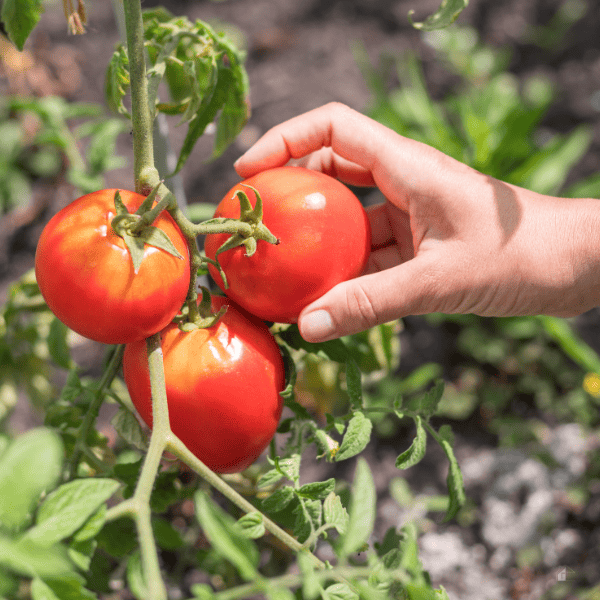
When should tomatoes be harvested?
With the right care, tomatoes are typically ready for harvest between 60 to 65 days after they've been planted in the garden. Generally, outdoor tomato plants reach their prime harvesting time towards the end of the growing season, which is usually in late summer or early fall.
Here is a table with some popular tomato varieties and their approximate days from planting seeds to harvest. Remember, these are general estimates, and the actual time can vary based on growing conditions.
| Tomato Variety | Days from Seeds to Harvest |
|---|---|
| Beefsteak | 80-100 days |
| Cherry | 70-80 days |
| Roma (Plum) | 75-80 days |
| Heirloom | 80-100 days |
| Early Girl | 50-60 days |
| Brandywine | 90-100 days |
| Celebrity | 70-75 days |
| Green Zebra | 75-80 days |
| Sun Gold | 55-60 days |
| Sweet Million | 60-65 days |
These durations are calculated from the day of planting the seed in your garden to the day you can expect to start harvesting ripe tomatoes.
Remember to adjust for your local climate and growing conditions as they can significantly influence the growth cycle.
Now, let's continue. There are various methods of harvesting tomatoes, which will be discussed in detail later.
To determine if your tomatoes are ripe and ready for picking, you can gently squeeze them to assess their firmness.
If a tomato feels overly hard, it's likely not ripe enough and should be left for a few more days. It's a good idea to check on your tomatoes every 1 to 2 days to identify which ones have ripened enough for harvesting.
On the other hand, a tomato that feels excessively soft is likely overripe and may not be ideal for use in salads. However, these tomatoes can still be harvested and put to good use in stews or for making homemade sauce.
Harvesting Tomatoes
Harvesting tomatoes at the right time is crucial for getting the best taste and quality from your homegrown fruits. Here’s a simple step-by-step guide for beginner gardeners:
Step 1: Know When to Harvest
Tomatoes are ready to harvest when they have reached their mature size and color. This can vary depending on the variety of tomatoes, but generally, you want to look for a bright, even color across the whole fruit.
For red tomatoes, this will be a deep, vibrant red. For other varieties, like yellow or green tomatoes, look for the color that is typical for that type.
Remember, don't rush the process. Tomatoes ripen from the inside out, so even if the outer skin looks ripe, the inside might still be too hard or lack flavor.
Step 2: Check the Firmness
Gently squeeze the tomato. It should feel firm but give slightly under pressure. If it's too hard, it's not ripe yet. If it's too soft, it might be overripe.
Step 3: Twist and Pull
To harvest the tomato, hold it in your hand and twist it until it snaps off the vine. Try to avoid yanking or pulling too hard as this can damage the plant and the fruit. Some gardeners prefer using pruning shears to cut the stem, especially for larger varieties.
Step 4: Store Properly
After harvesting, store your tomatoes at room temperature. Avoid refrigerating them as this can affect the flavor and texture. Tomatoes continue to ripen after being picked, so if you've harvested a tomato that's almost but not quite ripe, let it sit on a countertop for a few days.
Bonus Tip: End of Season Harvest
At the end of the growing season, you may have many green tomatoes left on the plant. When frost threatens, it's time to pick all the tomatoes, ripe or not. Green tomatoes can ripen off the vine indoors at a slower pace. Store them in a cool, dark place and check regularly for ripeness.
Remember, gardening is as much an art as it is a science, so don't get discouraged if your first few attempts aren't perfect. With time and practice, you'll develop a green thumb!
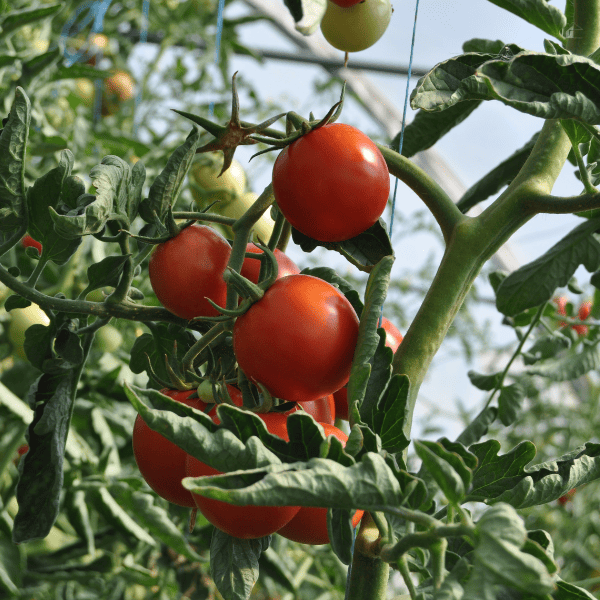
What makes tomatoes red?
Tomatoes turn red because of a pigment called “lycopene.” This is a natural substance that tomatoes produce as they ripen.
When a tomato is still green, it's because the lycopene hasn't been produced yet. As the tomato grows and matures, it starts making this pigment, which gradually changes its color from green to orange and finally to red.
Lycopene is not just responsible for the color, but it's also a powerful antioxidant that's very good for our health. So, when you're enjoying a ripe, red tomato, you're also getting a health boost from the lycopene it contains.
So, in a nutshell, the red color of tomatoes is a sign that they're ripe and ready to be enjoyed, thanks to the production of lycopene. Isn't nature wonderful?
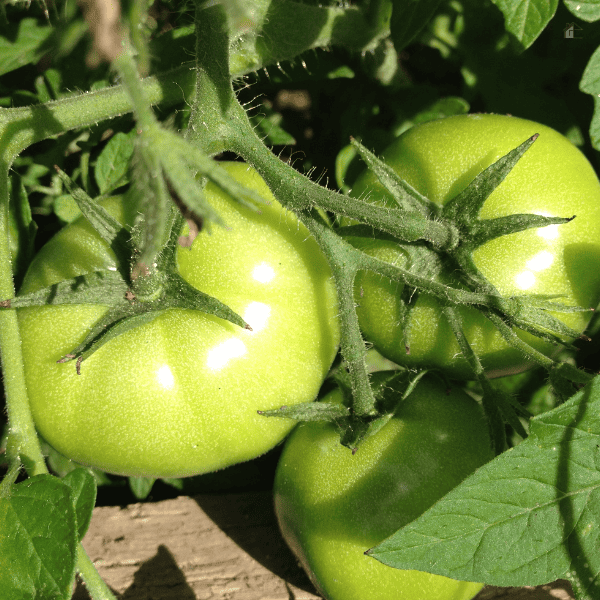
Can you pick tomatoes when they are green?
Absolutely, you can pick tomatoes while they're still green. In fact, there's a whole category of recipes specifically for green tomatoes, including the famous fried green tomatoes!
If you do pick them green, they won't have the sweetness that comes with ripe tomatoes because the natural sugars haven't fully developed yet. Instead, green tomatoes have a more tart flavor.
Also, if you find yourself at the end of the growing season with a bunch of green tomatoes still on the vine, don't worry. You can pick them and let them ripen indoors. Simply place them in a paper bag, stem side up, and store them at room temperature. Check them regularly, as they can ripen within a week or two.
Remember, whether you enjoy them green or wait for them to ripen, tomatoes are a versatile fruit (yes, they're a fruit!) that can add a burst of flavor to your meals.
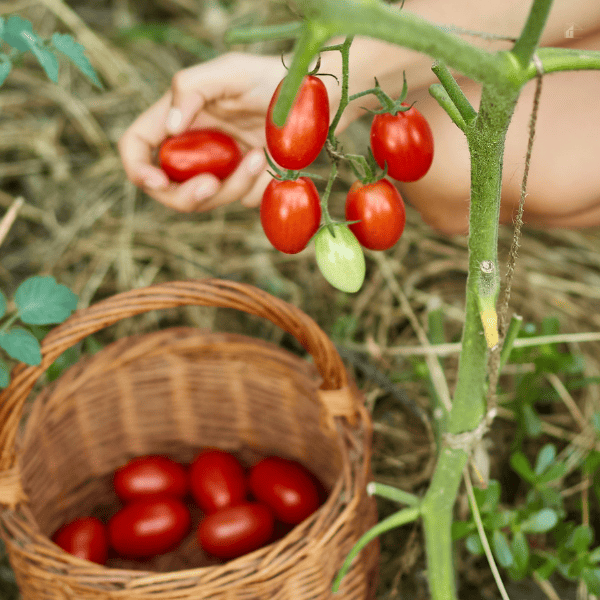
When should tomatoes be picked off the vine?
Ideally, you want to wait until they've reached their full, vibrant color. It could be a lush red, a sunny yellow, or even a deep purple – it depends on the variety you're growing. That's when they are at their sweetest and juiciest. Yum!
But hey, life isn't always ideal, right? So here's a couple of other things to keep in mind:
- The Weather Report: If Jack Frost is about to pay a visit, it's time to gather all your tomatoes, even if they're still sporting their green outfits. Frost and tomatoes are not the best of friends.
- Size Matters (and so does firmness): If your tomatoes have grown to their expected size and yield slightly under your gentle squeeze, they're likely ready for the picking.
- The Twist Test: Give your tomato a gentle twist. If it happily comes off the vine, it's saying, “I'm ready!” If not, give it a bit more time.
And remember, if you do pick a tomato that's not quite ready, don't worry! Just let it chill out at room temperature, and it'll ripen up nicely. Just avoid the fridge – it's not a fan of cold temperatures and can lose its texture and flavor.
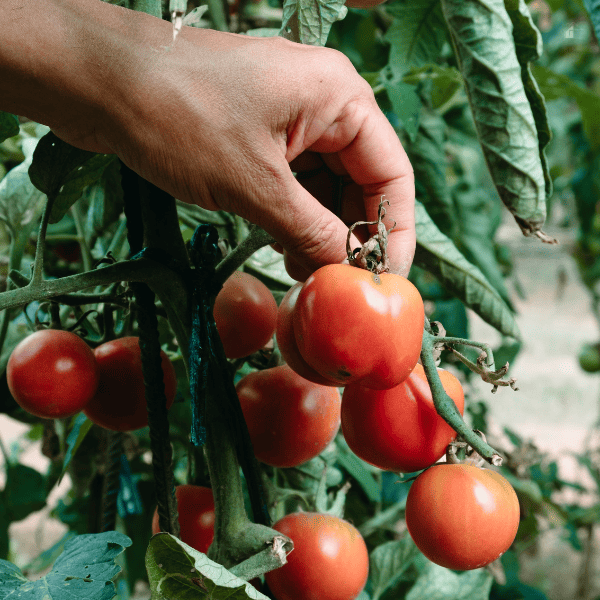
How many times can you harvest tomatoes?
Tomato plants are typically classified into two types: determinate and indeterminate.
- Determinate tomatoes: These plants grow to a certain height, usually around 3 to 4 feet, and then stop growing. All the tomatoes tend to ripen at once over a period of 1 to 2 weeks. Once the fruit is harvested, the plant is usually done producing. This makes determinate tomato plants a good choice for canning or sauce-making.
- Indeterminate tomatoes: These plants continue to grow, flower, and produce fruit throughout the growing season until killed by frost. They can reach heights of up to 12 feet, although 6 feet is more common. Harvests can be done on a rolling basis, often over a period of 2 to 3 months or even longer in favorable conditions.
So, the number of times you can harvest tomatoes from a single plant varies depending on the type of tomato plant. You may only get one major harvest with determinate varieties, while indeterminate varieties can provide continuous harvests throughout the growing season.
Will my tomato plants come back?
Unfortunately, due to their sensitivity to cold temperatures, tomato plants typically don't survive beyond one growing season in climates where temperatures can drop below 50 degrees. While they are perennials in their natural habitat and can live for several years, in most climates, they behave as annuals and perish once the temperature falls into the 40s or lower.
Do tomatoes ripen faster on or off the vine?
Is it more beneficial for tomatoes to ripen on or off the plant? Ripening tomatoes on the vine allows them to continue producing sugar, which enhances their sweet, juicy flavor. However, if you don't pick them at the optimal time, they may overripen on the vine. In such cases, harvesting them green or just as they begin to change color (the breaker stage) can be a good strategy.
For ripening green tomatoes off the vine:
- Enclose them in a paper bag with an apple or banana. Apples emit higher levels of ethylene gas than bananas, and this gas speeds up the ripening process.
- Wrap each tomato individually in newspaper to encourage quicker ripening.
- Place the tomatoes near a window where they will receive ample light, promoting ripening.
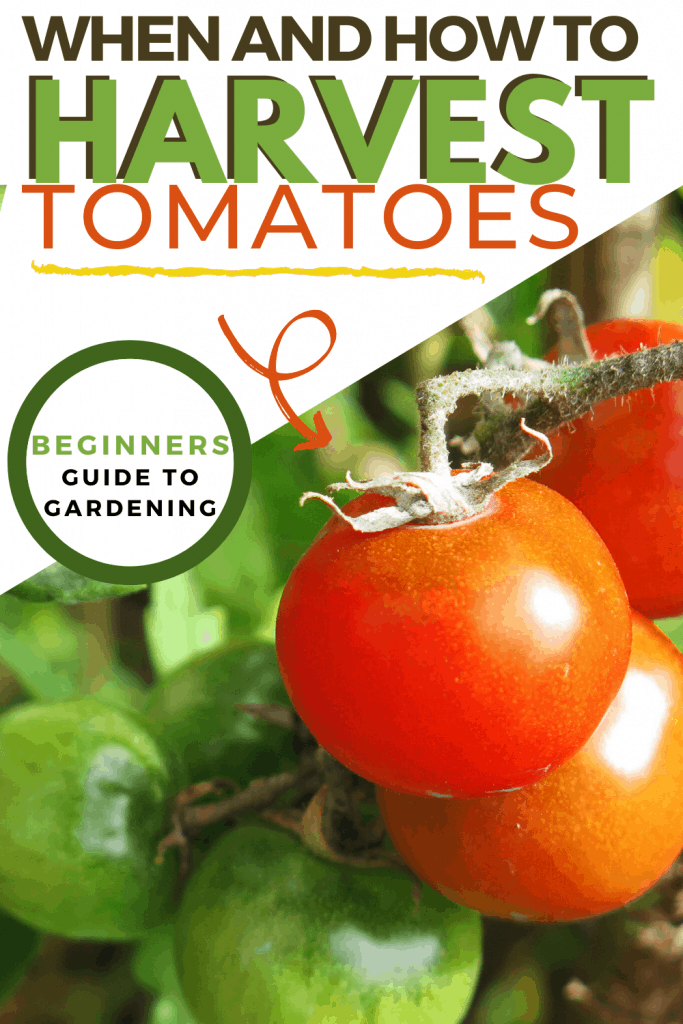
How to harvest tomatoes at the end of the season
Like all good things, the gardening season, too, must come to an end. As the end of the season approaches, your aim should be to harvest the best tomatoes before the frost sets in and your plants perish.
Here are some strategies to help you harvest as many tomatoes as possible.
- Ripe tomato on the plant.
- Adjust Your Plant Care Routine: As the season winds down, you'll need to modify how you've been caring for your tomato plants:
- Harvest Ripe Tomatoes: Make sure to pick all ripe tomatoes from your plants. This will ensure that you gather a good batch of tomatoes now, before it's too late or you accidentally overlook them.
- Remove All Flowers from The Plant: Since the tomato season is drawing to a close, it's time to remove all flowers from your tomato plants. By doing this, you allow the plant to focus its energy on nurturing the green tomatoes that are still growing and need to ripen. The production phase for new tomatoes is over; the focus now is solely on maturing the tomatoes that are already on the plant.
- Reduce Watering and Fertilizing: Again, the focus at this stage is to ensure that existing tomatoes ripen, not to produce more tomatoes. Therefore, cut back on watering and stop fertilizing. This will put the plant under a bit of stress, making it channel its resources towards ripening its fruit.
What to do after harvesting tomatoes?
There are many things you can do with your tomato plants. The video below will give you tips and guide you through this process.

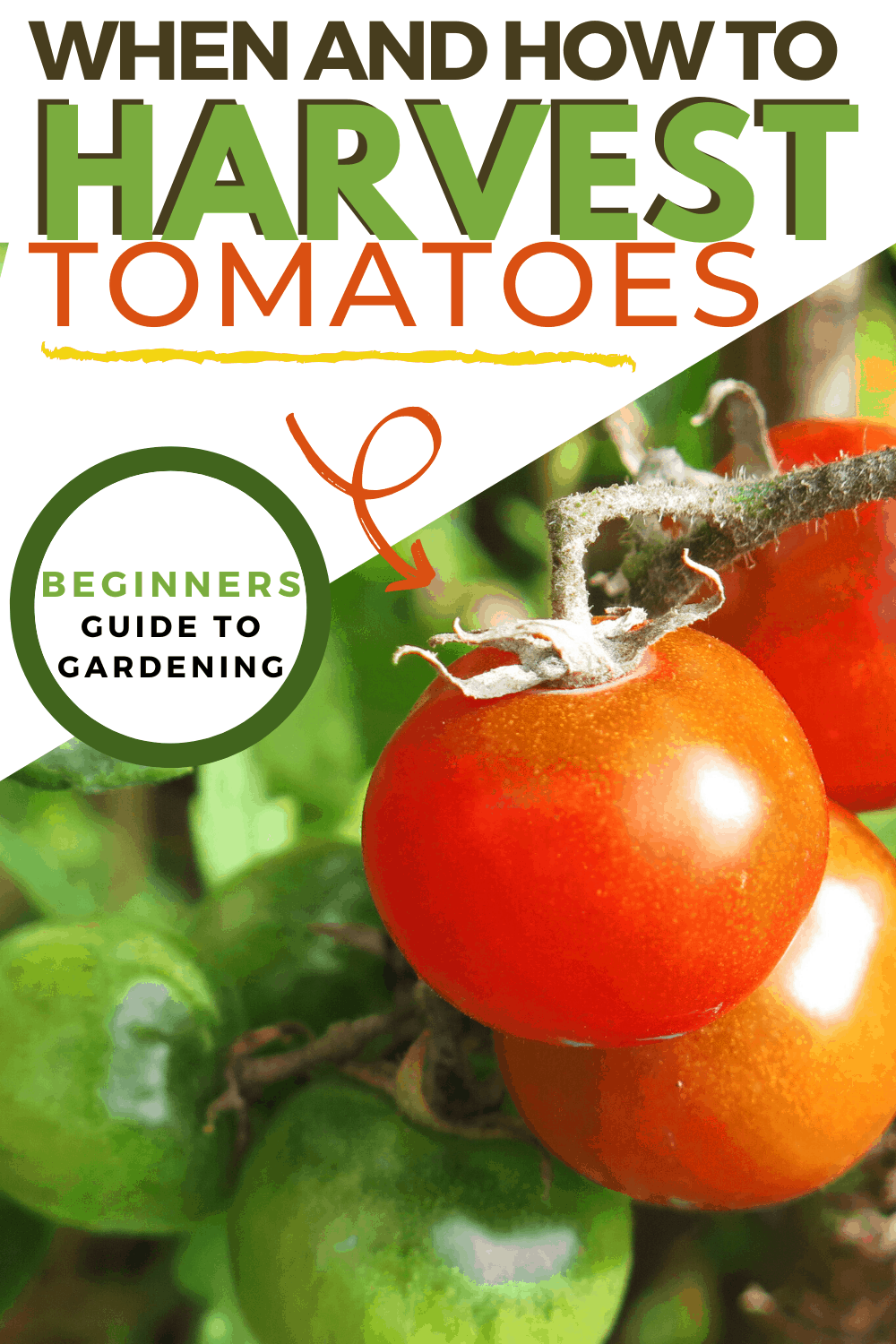

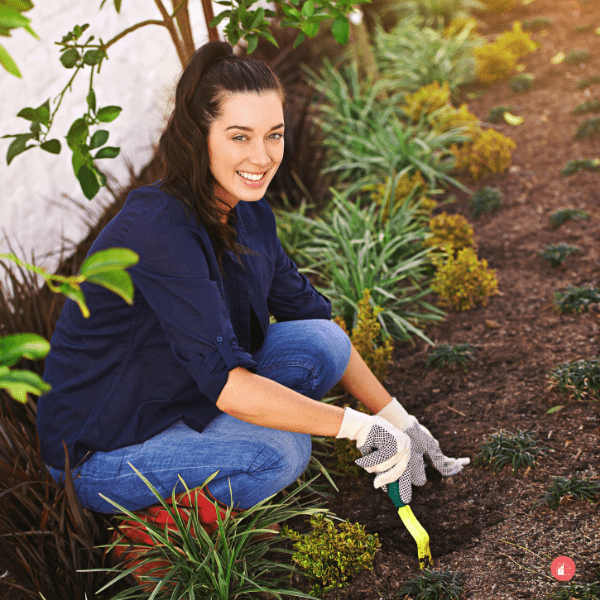


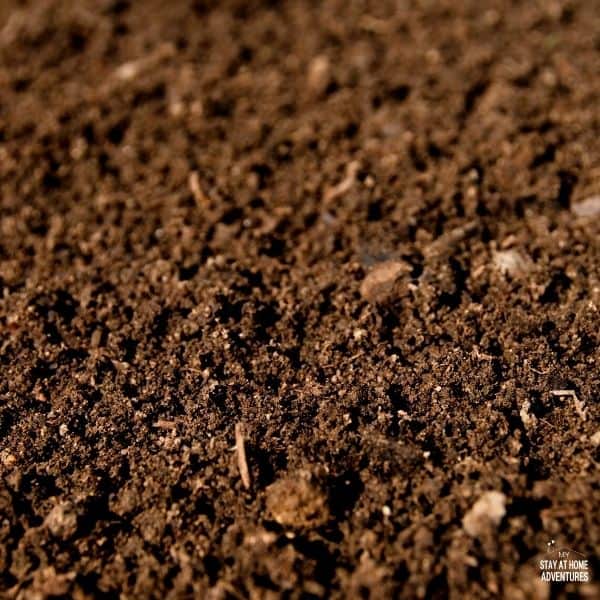

One Comment